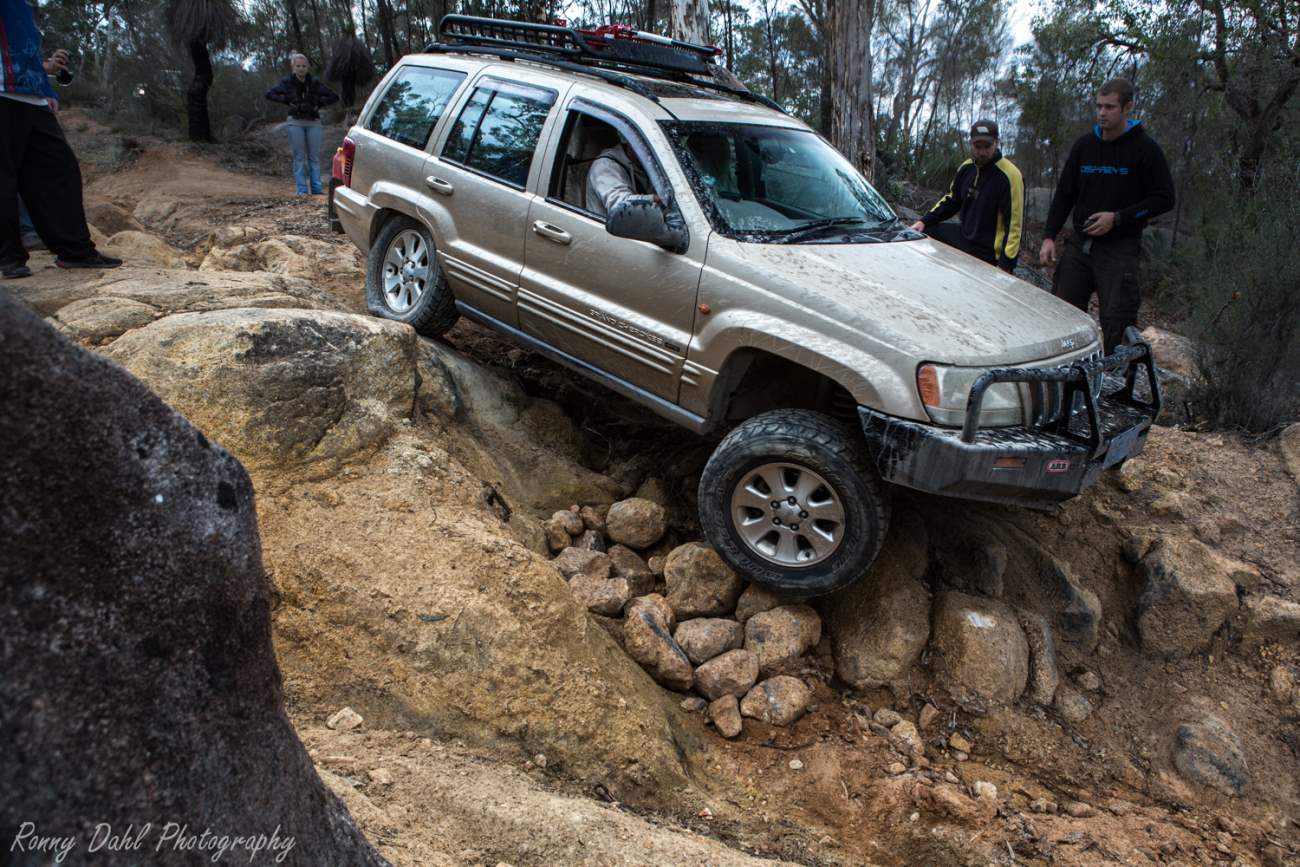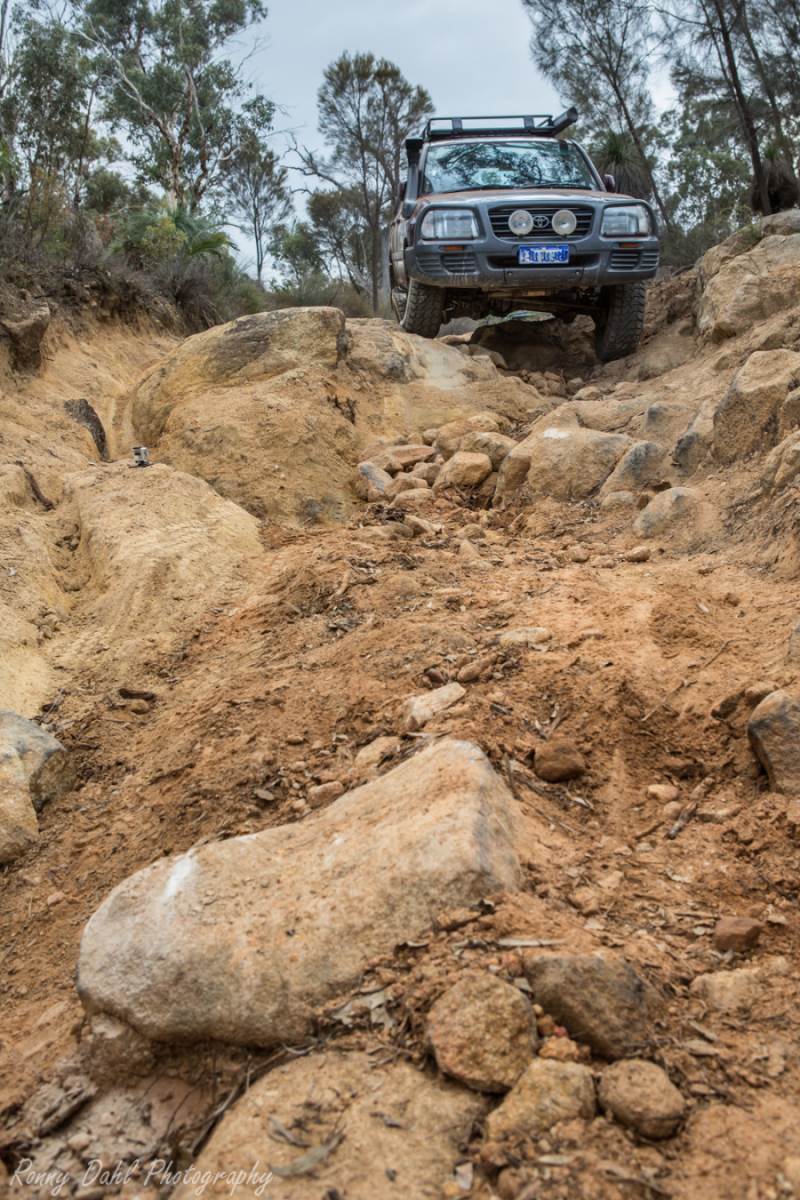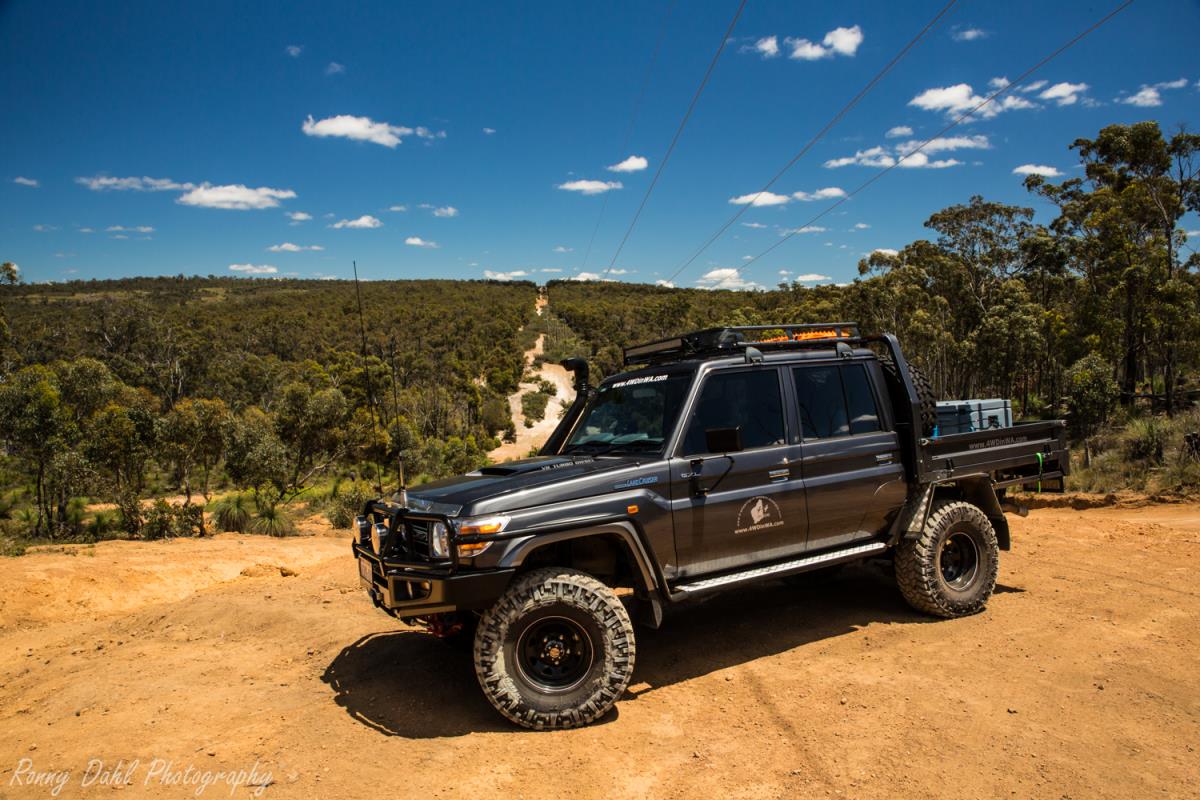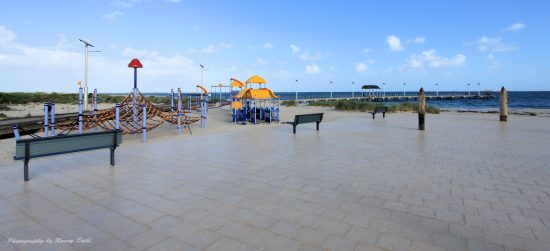
Rock crawling & Rocky obstacles.
Rock Crawling.
There are many types of different rocks to encounter on the tracks, some are already covered on other pages (coastal Lime stone and outback Jagged rocky tracks)
Driving on any type of rocky terrain requires slow driving, hitting these sections or areas at speed will almost guarantee damage.
Knowing where the diffs, fuel tank and other vulnerable areas are on the 4 wheel drive is critical, also knowing the wheel placement is very important, this is not something that's mastered quickly and will be different on other vehicles, over time you really get to know your 4wds weak points and where to place the wheels in order to avoid smashing a diff or fuel tank against something.
Jeep Cherokee Rock Crawling.
Rock Crawling.
This is when the terrain is mostly rock or totally just rock. These situations can be common in some areas, they are usually near or sometimes crossing rivers and should only be driven/attempted if the water level is low.
These are not small rocks we are talking about, some rocks can be the size of a two storey house with rock steps, nice rounded curve to the top or navigating between boulders, multiple large and small rocks and driving over stretches of loose rocks.
This can be real fun but also very dangerous and damaging if not knowing the hows
and why’s of navigating rocks.
It's always best to have a spotter, without one some areas you just won't get
though in one piece or not at all.
Rock Crawling is all about wheel placement and careful planning on the fly,
expect which ever challenge there is in front of you to take twice as long as
most of the time it will. This will help you not to rush anything.
Crawling
through dried up rocky river beds can be done slightly faster and will most of
the time only require a spotter now and then at the tricky parts. These areas
are usually covered in small boulders that will move now and again while
driving over them.
Taking on hills with big or medium rocks in your path will require good foot
work on the clutch, brake and accelerator pedals as you will need to find the
balance with the right momentum, best wheel placement and keeping your nerves
on tight camber and angles all at the same time. That's when it's really
challenging and fun.
Rock
steps:
It’s very much like driving up natures own very uneven stair case. These climbs and descents should always be done in 1st gear low, every bump on rocks is generally hard and will send continual shock loads on the suspension, therefore keep it nice and steady.
On big steeps or tricky parts it pays to track build.
Track building is when placing rocks or logs in a way that makes the intended
path easier or possible to do, this will help in overcoming the obstacle and reduce
the possibility of damage to the 4wd.
Always take each section on straight up or straight down if possible, sometimes
it is better to move slightly left or right while driving to get a better line
on the way up or down, just make sure that it is actually necessary to do so as
you will be more at risk while driving on an angle.
Never jar the brakes when moving backwards on a big angle, this is likely to cause a roll over. Instead try to gently apply brakes or even better continue forward if possible, momentum is your best friend when tackling angles and off camber terrain.
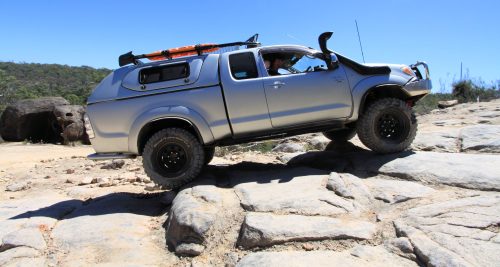
Tire
pressures:
Driving on any terrain tire PSI is the most important part when it comes to actually getting anywhere.
If the pressure is too high the vehicle will struggle to move skidding, feel more bumps, wear the clutch and other components.
On rock
terrain we would recommend not to go under 14 PSI; anything under that could
roll the tire off the rim quite easy.
Best tyre pressures for your 4WD will be different to the next persons 4WD.
The following chart is an approximate recommendation for tyre PSI:
- Rock terrain, rock crawling: 16-24
- Best tires for the rocks: Mud Terrains
Rock
terrain recovery:
Driving on rocks is best done slowly and slowly is also how the recovery is best done.
You just wouldn't snatch a vehicle out of a rock crawl, if someone was to try it would end up in a damaged 4wd and or a broken snatch strap.
Winching is the best way to recover in these circumstances. Winching is slow
and controlled. Multiple recovery points come in handy as many different
pulling directions may be involved in these situations.
Winch with a spotter and get out regularly making sure it's all going to plan,
this will keep the winch from overheating.
See more about winch recovery here.
Hard surface and 4x4:
Usually
when rock crawling the below "diff windup" (explained below)
shouldn't happen as you will release wind up through lifting the wheels as
rocky surfaces are very rarely smooth.
Winding up a differential too much will end up in a lot of noise and bad
mechanical failure.
What is WINDUP?
Basically having 4x4 engaged is meant as an off road traction aid. The front and rear wheels will always try to spin at the same rate, this is why most vehicles have a "limited slip differential" or LSD in the rear diffs, this allows the opposing wheel to turn at a different rate when cornering. Cornering will cause the inside wheel to spin less and the outside wheel to spin more, this is where LSD helps.
The front wheels are turning wheels and in two wheel drive it’s no problem as they can spin at different rates. When driving off road in 4x4 you will notice heavy steering when moving slow and turning sharp corners, this is because both your front wheels want to spin at the same rate, however on loose ground the wheels can spin/skip and release some of the wound up energy, on hard surfaces like tarmac or rock they can't as the traction is far too great. So if the wheels can't release the windup through the wheels then something has to give, a metal BANG is a horrible noise to hear on a track.
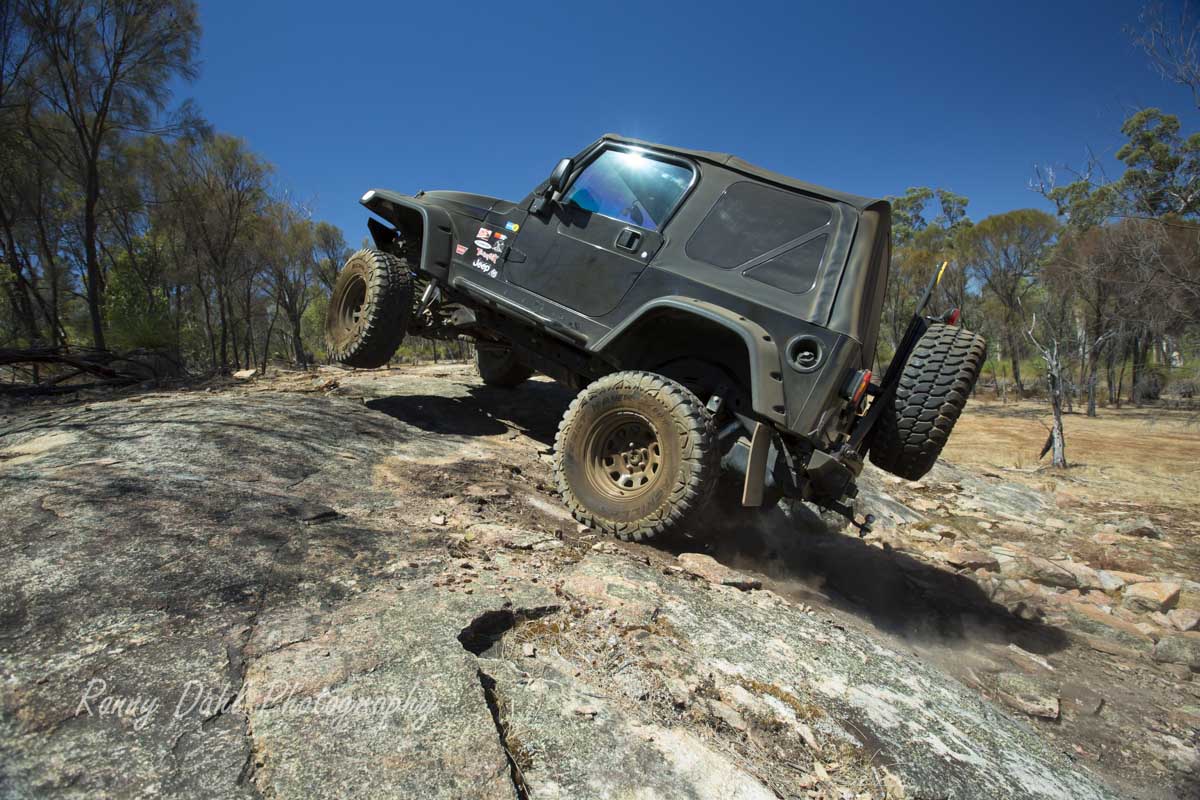
Lifting Wheels Helps Remove Bindup From Diffs.
Driving on rocks, most of the time a wheel will lift due to the uneven ground and will release the wind up, so don't worry too much just keep it in mind.
If using diff lockers be more careful if using the front lockers while steering lots, try only to use them on straight sections and switch them off when they are not needed.
Recent Articles
-
Goodyear wrangler MTR
Jun 28, 24 10:27 PM
I have these on my defender 90 and my Dmax Ute. I get around 100,000 km out of them. I tried AT for one change and went back to the MTs. They are gol -
4x4 off road tracks 0 to 250 km from Perth
Nov 21, 23 07:40 PM
On this page we cover 4x4 off road tracks within a 250 km radius from Perth... -
4 Wheeling Around Jurien Bay.
Nov 21, 23 07:35 PM
Jurien Bay 4x4 tracks info and general information about the area...
- Home
- Terrain Conquering
- Rock Crawling
Leave Rock Crawling And Go To Home Page.
